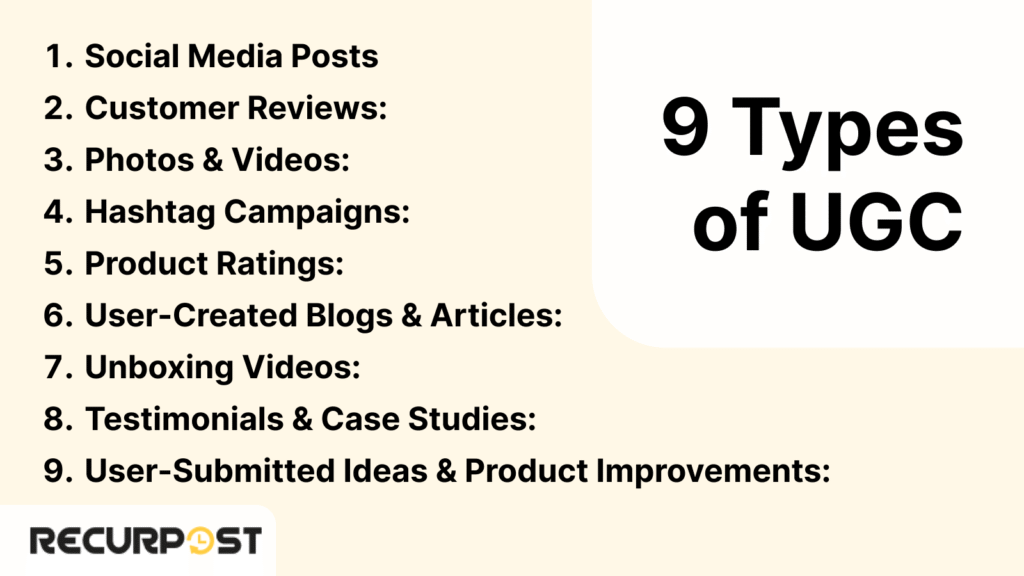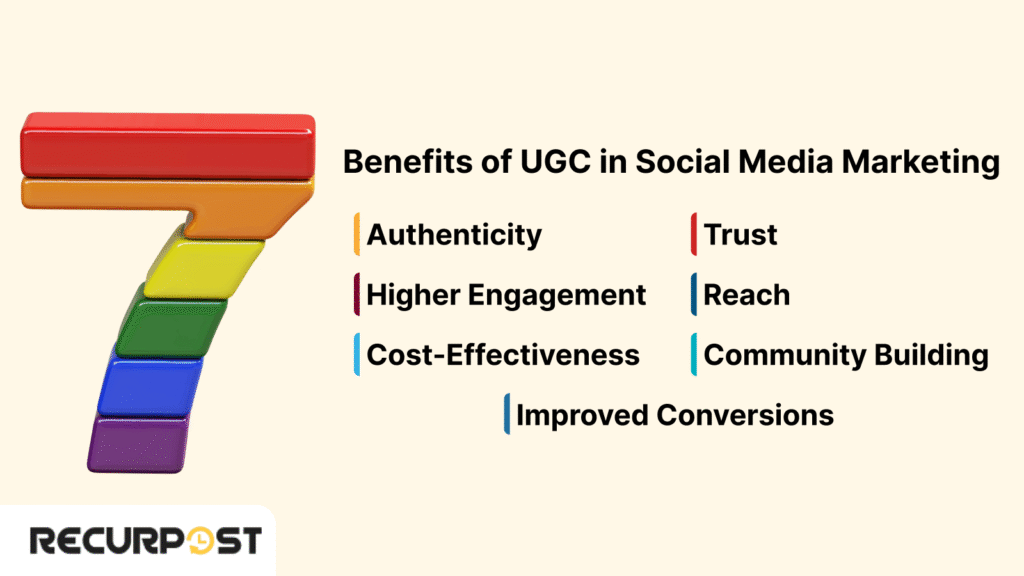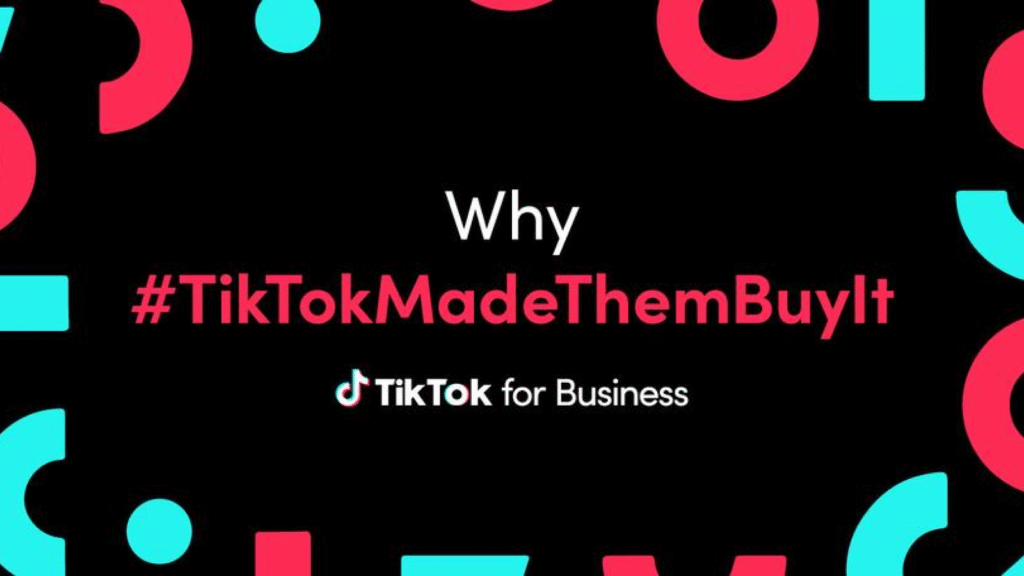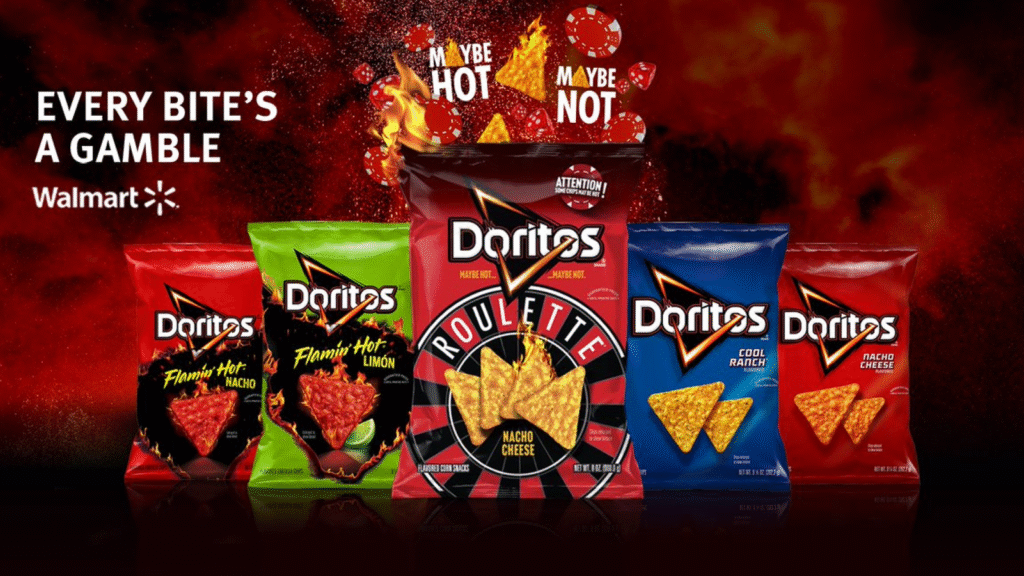What is UGC?
User-Generated Content (UGC) refers to content created by consumers or users, rather than by brands, where UGC represents any digital material that real people produce and share about products or services. This includes social media posts, photos, videos, reviews, and more, where UGC stands for User-Generated Content in social media contexts that brands use for authentic marketing campaigns.
UGC has become an important element in digital marketing, particularly on social media, because of its authenticity and ability to engage audiences in ways that brand-made content often cannot.
In 2024, there were significant shifts in user behavior across platforms, says Statista. From a rise in Instagram Story usage to TikTok extending video lengths, social media engagement has reached new levels. UGC is now central to this shift, connecting brands with their audience in more meaningful and relatable ways. Consumers trust content from fellow users more than traditional ads, making UGC a key tool for building brand loyalty, driving customer engagement, and attracting potential customers.
In this blog, we’ll examine what UGC is, its importance in social media marketing, and how brands can use it to improve their marketing efforts and engage with their audience more effectively.
Types of UGC

User-generated content (UGC) appears in various forms across social media platforms. The most common types include:
Social Media Posts
Content created by social media users on platforms like Instagram, TikTok, and Facebook includes photos, videos, or text shared to highlight personal experiences with brands or products. These posts on social media channels drive brand engagement and awareness.
Customer Reviews
Feedback from users shared on websites or review platforms builds trust and influences purchasing decisions. Reviews contribute to brand identity and increase loyalty, making them particularly valuable for e-commerce platforms.
Photos & Videos
Visual content showcases how users interact with products or services. Images and videos shared across social media channels demonstrate real-world use, adding authenticity to brand messages and providing social proof.
Hashtag Campaigns
Content shared by users under branded hashtags for specific campaigns or challenges encourages engagement with brands. These campaigns create buzz, increase brand awareness, and spread content organically.
Product Ratings
Ratings submitted by users, often with brief reviews, inform potential buyers and build brand credibility. E-commerce platforms and product review sites feature these ratings to help users make informed purchasing decisions.
User-Created Blogs & Articles
Content written by users about product or service experiences provides brands with new perspectives. These blogs offer relatable, authentic content that resonates with audiences.
Unboxing Videos
Videos where users showcase product unboxing are especially popular for tech and lifestyle products. Unboxing videos give potential customers a firsthand look at the product experience while providing social proof for brands.
Testimonials & Case Studies
Written or video content where users share product or service experiences highlights benefits. These testimonials influence potential buyers by showcasing real customer satisfaction and building brand loyalty.
User-Submitted Ideas & Product Improvements
Feedback and suggestions from users on product or service improvements help brands build stronger customer relationships. This UGC demonstrates that customer input matters, strengthening online communities.
UGC gained significant popularity in 2024, especially among younger audiences. Individuals aged 18 to 24 are the most receptive group globally, with eight in ten shoppers in this age bracket actively engaging with UGC. A similar trend is also seen among consumers aged 25 to 34, making UGC a powerful tool for brands aiming to engage these key demographics.
Each of these types of UGC content can play a unique role in helping brands build trust, engage their audience, and strengthen their online presence. By encouraging user-generated content, brands utilize a more authentic and relatable way to communicate with their target audience, fostering deeper connections and brand loyalty.
Why UGC Matters in Social Media Marketing

Forbes and other publications like LinkedIn predict that by 2025, user-generated content (UGC) will become a core component of marketing strategies. With rising influencer fees and tighter marketing budgets, brands are expected to shift their focus toward UGC and employee-generated content (EGC). This shift aims to leverage authentic content from customers and employees, building trust and increasing engagement in a cost-effective manner.
Brands using social media platforms gain these benefits from UGC:
- Authenticity and Trust: UGC appears more relatable and trustworthy than brand-created content. UGC acts as social proof, enhancing brand credibility. Consumers trust content from real users more than traditional advertisements, which strengthens brand identity and drives customer engagement.
- Higher Engagement and Reach: UGC generates more engagement by spreading organically through users’ networks. This expanded reach connects brands with larger audiences across social media channels without additional ad spend.
- Cost-Effectiveness: UGC reduces production costs. Brands leverage user-created content for budget-friendly marketing results. Paid user-generated content offers an alternative to expensive advertising campaigns while delivering organic reach.
- Improved Conversions: UGC leads to better conversion rates. Content from real customers resonates with potential buyers, increasing purchase likelihood compared to traditional ads. Authentic content directly impacts purchasing decisions, builds trust, and increases sales.
- Community Building: Encouraging UGC builds a community around brands. UGC fosters emotional connections with audiences, turning users into brand advocates and promoting long-term loyalty. Creating spaces for user interaction strengthens online communities and deepens customer relationships.
Integrating UGC into marketing campaigns increases engagement, boosts brand trust, and creates loyal communities that drive brand success. Brands embracing UGC creators who shape the digital space position themselves to thrive.
Legal Considerations for UGC
Brands must follow proper legal steps when using user-generated content (UGC) in marketing campaigns to avoid potential issues. Here are some key legal considerations:
- Obtain Permission: Always seek explicit consent from the user before repurposing their UGC content for marketing campaigns. Getting permission ensures that the UGC creators are aware of how their content will be used and helps maintain a respectful relationship with your audience.
- Respect Copyright: Ensure that all user-generated content is free from third-party copyrights. This includes checking that no copyrighted images, music, or logos are present in the content shared by users. Using copyrighted material without permission can lead to legal trouble and damage the brand’s reputation.
- Proper Attribution: It is essential to credit the original creator when using their UGC. Proper attribution maintains transparency, respects the rights of UGC creators, and fosters goodwill within the online community. Always tag or mention the user whose content you are sharing, whether it’s a photo, video, or review.
- Comply with Privacy Laws: Be mindful of privacy regulations, such as GDPR, when collecting and using personal data in UGC. Brands should ensure they have the necessary consent from users to use any personal information in their user content. This is particularly important when sharing sensitive or identifiable information, like customer reviews or photos.
By keeping these legal aspects in mind, brands can use UGC content effectively while protecting themselves from legal risks and maintaining a positive relationship with users. Adhering to these guidelines not only avoids legal complications but also builds trust and strengthens brand loyalty.
UGC vs. Traditional Marketing
User-Generated Content (UGC) and traditional marketing serve similar purposes but differ significantly in their approaches to audience engagement, trust building, and influence on purchasing decisions.While traditional marketing relies on professionally produced content, UGC taps into authentic, consumer-created content. Here’s a quick look at how these two methods stack up against each other:
| Aspect | User-Generated Content (UGC) | Traditional Marketing |
| Authenticity | UGC is authentic and comes directly from real consumers, creating relatable content. | Traditional marketing is brand-created and can be seen as less genuine or overly polished. |
| Cost | UGC is cost-effective as it uses content created by users, reducing production costs. | Traditional marketing involves high production costs (e.g., photoshoots, professional ads). |
| Reach | UGC spreads organically across social media, reaching wider audiences via user networks. | Traditional marketing reaches its audience primarily through paid ads, lacking organic spread. |
| Engagement | UGC typically receives higher engagement, as it resonates more with users. | Traditional marketing generally sees lower engagement, especially on social media. |
| Impact on Trust | UGC boosts trust through social proof, as users value content from their peers. | Traditional marketing often struggles to build the same level of trust. |
| Effect on Purchasing | UGC influences purchasing decisions by showing real-life experiences with the product. | Traditional marketing influences purchasing through professional ads, but often lacks the personal touch. |
Successful UGC Brand Campaigns
User-generated content (UGC) plays a central role in modern marketing by boosting brand engagement and loyalty. Here are a few standout campaigns:
1. Campaign: #GoPro

Year: Ongoing
Description: GoPro motivates users to share UGC by posting adventure videos captured with their GoPro cameras. This not only showcases the product’s capabilities but also builds trust through real user experiences. By sharing these videos on social media platforms, GoPro turns UGC creators into passionate brand advocates, fostering a community of outdoor enthusiasts and action sports fans.
2. Campaign: #TikTokMadeMeBuyIt

Year: 2024
Description: TikTok uses UGC from creators to showcase viral products, with #TikTokMadeMeBuyIt trending across platforms. The campaign capitalized on the social media platform’s ability to drive product discovery, where user-generated content directly influences purchasing decisions. This has made TikTok a significant player in UGC-driven e-commerce.
3. Campaign: #DoritosFlaminHotChallenge

Year: 2023
Description: Doritos launched the #DoritosFlaminHotChallenge, inviting fans to share their reactions to eating the Flamin’ Hot version of Doritos. Users posted videos of their reactions on TikTok and other social media platforms, driving significant engagement. The campaign effectively leveraged UGC to generate buzz and excitement around the product, encouraging customers to interact directly with the brand.
These campaigns show that UGC strengthens brand loyalty, creates engagement, and builds an authentic online community. By leveraging UGC, brands can connect with their target audience and amplify their marketing efforts.
Best Practices for Encouraging UGC
Encouraging user-generated content (UGC) helps brands connect with their audience and build loyalty. Here are key strategies to boost UGC:
- Create Branded Hashtags: Motivate users to use a specific hashtag tied to your campaign, making it easier to track and amplify UGC across social media networks.
- Host UGC Contests: Incentivize UGC creators with prizes or recognition to drive user-generated posts and enhance engagement.
- Share UGC Across Platforms: Display user-generated content on your website and social media accounts to strengthen brand identity and provide social proof.
- Use Social Media Tools: Tools like RecurPost help brands schedule and organize UGC across multiple platforms, ensuring consistent posting and maximizing reach.
- Acknowledge Contributors: Thank users for sharing content and give credit, fostering a sense of community and boosting brand loyalty.
- Ask for Feedback: Encourage users to share their experiences and insights, helping you refine your marketing strategy.
By following these best practices, brands can effectively leverage UGC to engage their audience, build trust, and strengthen brand sentiment.
The Future of UGC in Social Media Marketing
As social media and digital marketing evolve, UGC will continue shaping successful marketing strategies. Here’s how we expect user-generated content (UGC) to grow and influence social media marketing in the near future:
- Integration with Influencer Marketing: Brands will increasingly combine UGC with influencer partnership to amplify reach and authenticity. UGC creators will collaborate with influencers to generate content that feels both personal and professional, boosting the trust consumers place in the brand.
- Personalized Campaigns: Brands will tailor UGC campaigns to specific customer segments using advanced targeting techniques. By analyzing audience insights, businesses will create more relevant content that speaks directly to their target audience, increasing the chances of engagement and conversions.
- Paid UGC: As brands look for more ways to expand their reach, some will explore compensating users for creating high-quality UGC. This approach will allow brands to leverage fresh, authentic content while incentivizing users to participate in marketing campaigns.
- AI-assisted UGC Curation: The role of AI in social media marketing is growing. Brands will begin using AI tools to help curate and manage UGC campaigns more efficiently. AI can help sort through large volumes of user content, identify the most impactful posts, and even suggest the best times to share them across social media networks.
- Predictions from Industry Experts: Experts predict that UGC will become even more integral to social media marketing in the coming years. As users continue to value authentic and relatable content, brands will rely more on user-generated posts to build identity, strengthen community engagement, and enhance brand loyalty.
Brands are exploring innovative ways to incorporate UGC into their social media strategies, indicating a promising future for this approach. Whether through collaboration with influencers, paid UGC, or AI tools, brands will continue to find innovative ways to harness user-generated content for better engagement and brand success.
How RecurPost Helps Manage UGC
RecurPost makes it easier for brands to manage user-generated content (UGC) and boost their UGC strategy. Here’s how:
- Scheduling Features: RecurPost lets you schedule UGC for optimal timing across social platforms, ensuring consistent and timely sharing of user content.
- Testimonial Templates: Convert user reviews from social inboxes into shareable image testimonials instantly, turning consumer-generated content into eye-catching marketing assets.
- Analytics: Track UGC performance with RecurPost’s analytics to measure engagement and optimize future campaigns.
- Multi-Platform Posting: Share UGC content across multiple social media channels, maximizing reach and engagement.
With RecurPost, managing and sharing authentic UGC becomes simple, helping brands strengthen brand loyalty and enhance engagement.
Conclusion
The growth of UGC offers significant opportunities for brands to connect with their audience in a more genuine and relatable way. As social media continues to expand, innovate, and evolve, the role of user-generated content will only become more important in shaping marketing strategies.
By 2028, social media users will surpass 6.05 billion, representing more than half the world’s population. This growth makes UGC a powerful tool for brands to reach broader audiences and build lasting relationships with target markets.
As the digital space expands, embracing UGC will help brands thrive in an environment where authentic content drives consumer decisions and strengthens brand loyalty.
Frequently Asked Questions
1. How can UGC help with brand sentiment?
User-generated content (UGC) helps improve brand sentiment by showcasing real, positive experiences from customers. When users share authentic content, it reflects their feelings about the brand. This authentic and relatable content builds trust, making it easier for others to connect with the brand and form an emotional bond.
2. How can brands measure the effectiveness of their UGC campaigns?
Brands can measure UGC effectiveness by tracking engagement rates (likes, comments, shares), conversion rates, increased website traffic, and brand sentiment analysis. Social listening platforms and analytics tools can help measure the impact of UGC campaigns and understand which user content resonates most with potential customers.
3. Can UGC help with customer retention?
Yes, UGC plays a significant role in customer retention. By featuring user-generated content on brand platforms, brands show appreciation for their customers, making them feel recognized. This strengthens brand loyalty, keeping customers engaged and connected over time, and encouraging them to share more user content.
4. How do I prevent UGC from becoming repetitive or stale?
To keep UGC fresh and engaging, introduce new ideas and challenges regularly. Run diverse campaigns with varying themes, encourage different forms of user content (such as photos, videos, and testimonials), and actively engage with UGC creators to keep the content exciting. By consistently encouraging users to share authentic content, you ensure your brand stays relevant.
5. What role does UGC play in influencer marketing?
UGC complements influencer online marketing by showcasing authentic user-generated content alongside influencer-created content. Influencers can encourage their followers to create content that aligns with the brand’s message. Brands can then use this UGC to boost credibility, enhance brand identity, and expand reach across social media networks.

Ruchi Dhimar is a skilled content writer with 4 years of experience. She is passionate about crafting compelling narratives, specializing in writing content for different industries.
